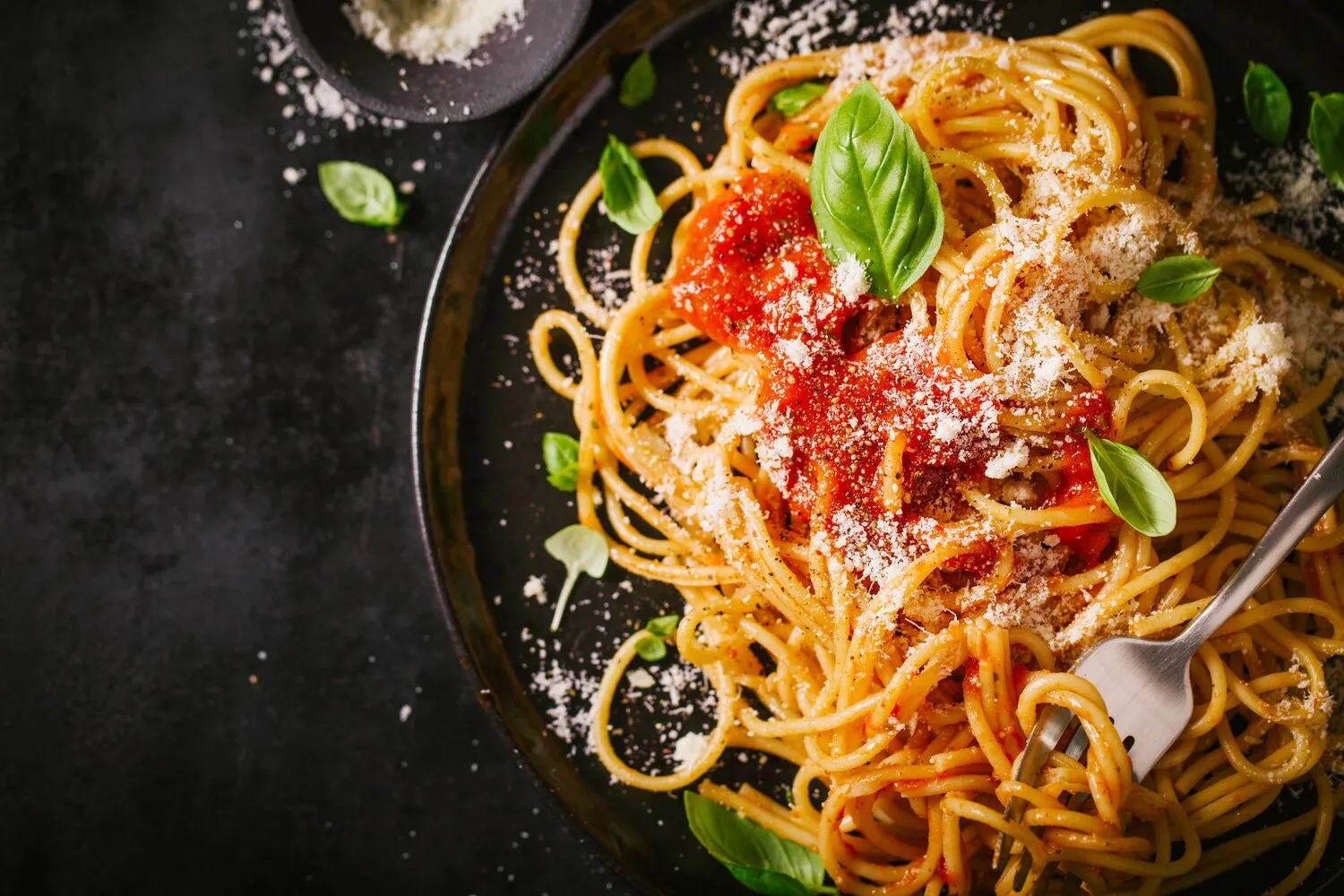
Pasta
Italian-style pasta dishes, which likely include various sauces and preparations.
Nutrition Facts
* The % Daily Value (DV) tells you how much a nutrient in a serving of food contributes to a daily diet. 2,000 calories a day is used for general nutrition advice.
Restaurant Metropol traditional albanian and italian food
Pasta's history is complex and spans centuries. While the exact origin is debated, evidence suggests forms of pasta existed in ancient times, potentially influenced by Middle Eastern and Asian noodle traditions. However, it was in Italy, particularly Sicily, that pasta production and consumption became widespread during the Middle Ages. The introduction of durum wheat, perfect for pasta making, and the development of drying techniques further cemented pasta's place in Italian cuisine. Tomato sauce, a quintessential pairing, arrived much later, after the European discovery of the Americas and the subsequent cultivation of tomatoes in Italy.
Pasta is deeply ingrained in Italian culture, far beyond just a food source. It represents family, tradition, regional identity, and a shared sense of national pride. From everyday meals to festive celebrations, pasta is a central element of the Italian culinary experience.
Family Meals
Pasta dishes are often served during family gatherings, symbolizing unity and connection. Recipes are frequently passed down through generations, carrying with them cherished memories and culinary secrets.
Regional Diversity
Each region of Italy boasts its own distinct pasta shapes and sauces, reflecting the local ingredients and culinary traditions. This regional diversity contributes to the vast and fascinating world of Italian pasta.
Social Occasions
Pasta is a staple at social events, from casual gatherings to formal dinners. Its versatility and wide appeal make it a perfect choice for sharing and enjoying with friends and family.
Rituals
Certain pasta dishes are associated with specific holidays or celebrations. For example, lasagna is often prepared for Christmas or special occasions, creating a sense of tradition and festivity.
Italian pasta dishes are incredibly diverse, showcasing a wide range of flavors. The foundation often relies on the quality of the pasta itself, highlighting the taste of durum wheat. Sauces contribute a spectrum of tastes, from bright and acidic tomato-based sauces to rich and creamy cheese-based sauces, and savory meat-based sauces.
Common flavor profiles include: Umami from tomatoes, mushrooms, and meat; Herbaceous notes from basil, oregano, parsley, and rosemary; Sharpness from garlic, chili peppers, and cheeses like Pecorino Romano; Richness from olive oil, butter, cream, and egg yolks; Acidity from tomatoes and wine; Sweetness from caramelized vegetables. The specific ingredients vary greatly depending on the region and the chosen pasta dish. For example, pesto focuses on fresh basil, pine nuts, garlic, and Parmesan cheese, while carbonara relies on eggs, guanciale, Pecorino Romano cheese, and black pepper.
Cook Pasta 'Al Dente'
Pasta should be cooked until it is 'al dente,' which means 'to the tooth' in Italian. It should be firm to the bite, not mushy. This ensures the best texture and allows the pasta to absorb the sauce properly.
Use Enough Salt
Salt the pasta water generously. This seasons the pasta from the inside out and enhances its flavor. Think 'salty like the sea' as a general guide.
Reserve Pasta Water
Before draining the pasta, reserve about a cup of the starchy pasta water. This water can be added to the sauce to help it cling to the pasta and create a creamier texture.
Combine Pasta and Sauce Immediately
Don't let the cooked pasta sit for too long before adding the sauce. The pasta should be combined with the sauce while it's still hot, allowing the flavors to meld together effectively.
Explore additional Italian dishes and restaurants
Explore ItalianDiscover top dining spots and culinary experiences in Bashkia e Tiranes.
Explore Bashkia e TiranesLearn more about the food culture, restaurant scene, and culinary heritage of Albania.
Explore Albania
